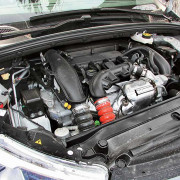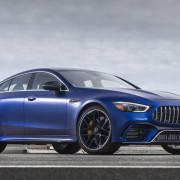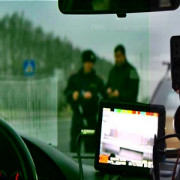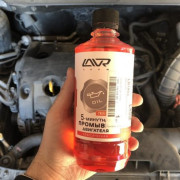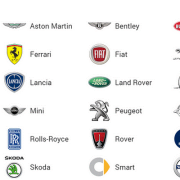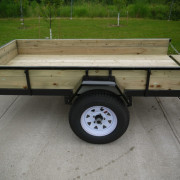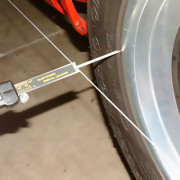Автомобиль 1966 volvo p1800 прошел почти 5 млн. километров
Содержание:
- Designed with Swedish Steel mixed with Italian Chic
- The End of the Road for the Three Million Mile Car
- Мировой рекорд пробега
- Volvo P1800 Innovations and Versions
- The Saint
- The Volvo P1800 Enters Production in Britain
- Популярная известность
- The Best Design Comes From a Swede (With a Hint of Italian)
- The Swedish Volvo 1800 S and 1800 E
- Рекомендации
- The King of Reliability – Guinness Book of Records
- The Early days of the Volvo P1800
- Enter the “Fish Van”, Otherwise Known as “Snow White’s Coffin”
- Примечания
- Внешние ссылки
- Prices on the Rise
- Red Racing P1800 – Racing History
- The Volvo P1800: Cheaper than a Ferrari (and Much More Practical)
- История
- Under the Hood of the P1800
- Conclusion
- Introduction: The Volvo “Chevvy Corvette” That Wasn’t
Designed with Swedish Steel mixed with Italian Chic
A Volvo that looks as chic as an Italian Gran Turismo, drives as spectacularly as a British sports car, and is still as robust as a Swedish tank: the P1800 was a great all-rounder.
The P1800 was designed by a Pelle Petterson, who is now a very successful sailor and a boat designer.
In 1957, Petterson, only 25 years old at the time, presented a design for the Italian design studio Frua that is so timeless that it still looks smart even after 60 years.

Pelle Peterson’s design was selected out of four main potential options. Being the son of the Volvo design consultant Helmer Petterson, Pelle’s design was criticized for having an unfair advantage compared to the other design proposals. Many years later, Pelle’s design was finally acknowledged and Petterson received the credit he deserved for designing one of best-looking coupes ever.Despite the P1800 looking sporty it was in no way a purebred athlete. It would need a more powerful engine. That’s why the renowned American designer Robert Cumberford got the idea to power the car with a 196-horsepower eight-cylinder engine borrowed from Ford.
The idea was difficult to come into fruition as the car was too loud and heat from the engine dissipated heavily into the passenger cabin forcing plans to be abandoned.
Then came Aston Martin. When they needed a car to test their new four-cylinder, 151 horsepower engine, they thought of the Volvo P1800. Only one prototype was ever built and the project was scrapped. Similar events happened to the convertible version of the P1800 from 1968. Only 50 of versions were built before the project ended.
The End of the Road for the Three Million Mile Car
The P1800 was built on the foundation of the legendary Volvo Amazon and so it was made to last, and it was made to go, not to break down. The record mileage on a P1800 was set by Irv Gordon of East Patchogue, New York, who got his name into the Guinness Book of Records in 1987 when he’d covered 1.69 million miles. Irv had bought the car in 1966 and had been the only owner, and he had not been using it for commercial purposes. Irv kept on driving the P1800 and by 2002 had reached the 2 million mile mark, and was featured on Jay Leno’s “The Tonight Show with Jay Leno”. In September Irv and the P1800 reached 3 million miles and he and the P1800 were still going. By the time Irv passed away on November 15, 2018 his P1800 had reached 3.2 million miles.
Irv Gordon’s P1800 was a testimony to the durability of the cars built on the Volvo Amazon foundation and both he and the car featured in Volvo promotional materials. But there is something more telling about Volvo’s attitudes to building automobiles back then. I remember taking a high mileage car that was not a Volvo into a dealer for a service some time ago and when he saw the mileage he said “we wouldn’t want to build too many like that”. A car manufacturer can have an attitude that they want a car to wear out nice and quickly so you’ll be forced to buy another new car, and often to go into debt to do it. By comparison Volvo in the 1960’s were building cars that would last, and that would build the company’s name as a manufacturer of cars that would last, Irv Gordon’s P1800 being a great example.
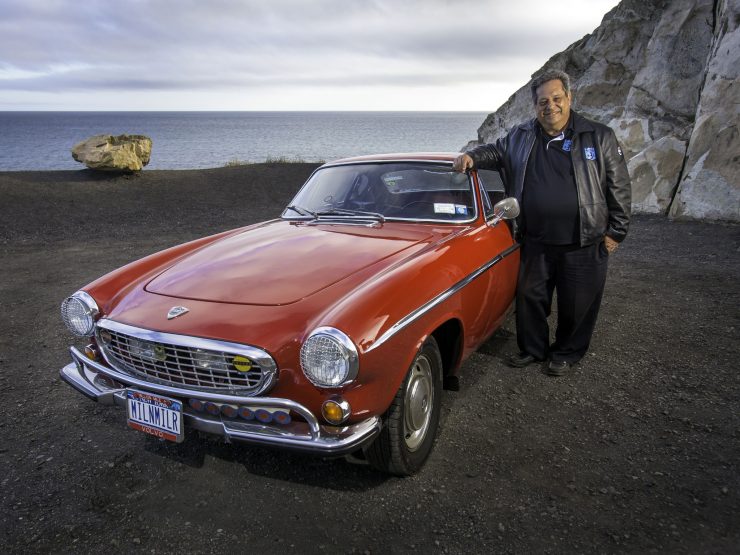
Мировой рекорд пробега
Volvo P1800S (1966), прошедший к 2013 году 3 млн. миль (4.8 млн. км)
С середины 1990-х годов мировой рекорд самого длинного зарегистрированного пробега для некоммерческого автомобиля принадлежит спортивному купе Volvo P1800S 1966 года выпуска.
К моменту, когда рекорд был зафиксирован в книге рекордов Гиннесса в ноябре 1998 года, автомобиль прошёл более 2,5 млн км (1671 тыс. миль). К сентябрю 2006 года это спортивное купе преодолело рубеж 4 млн км, что составляет 100 кругосветных путешествий или 5 путешествий до Луны и обратно.
В сентябре 2013 года согласно пресс-релизу Volvo Cars этот автомобиль прошел 3 млн миль или 4.8 млн км.
Автомобиль-рекордсмен принадлежал бывшему школьному учителю Ирвину Гордону (англ. Irvin Gordon) из Лонг-Айланда, штат Нью-Йорк, единственному его владельцу. Автомобиль до сих пор имеет родной двигатель (после двух капитальных ремонтов), радио, шасси и трансмиссию. Он исколесил не только Соединённые Штаты, Канаду и Мексику, но и многие европейские страны (Нидерланды, Германию, Швецию). К моменту, когда хозяин автомобиля Ирвин Гордон умер 15 ноября 2018 года, машина прошла 3,2 млн миль.
Volvo P1800 Innovations and Versions
The safety aspect of the fast Volvo P1800 was visionary. It was the world’s first sports coupé to have seat belts for all four passengers as standard. Volvo Germany demonstrated the effectiveness of this restraint system in a show in the port of Hamburg in 1961.Regular small model updates were enough to keep the Volvo P1800, which was drawn in its basic form in 1957, optically fresh for decades.
This included a smooth bumper design in 1964 that replaced the initial “cow horn” arches, as well as regularly updated radiator grilles.

The first refresh of the P1800 was the 1800S. The letter S stood for “Sverige” or Sweden in English. This letter was added to announce the move from the British production plants back to production plants in Gothenburg, Sweden. The 1800S also received an additional 8 hp. Later in 1966 the engine was renewed and sported 115 hp which raised the top speed to 175 km/h. The before mentioned B18 four-cylinder engine was replaced in 1969 by the bigger B20 engine that provided 118 hp.The next big change for the Volvo P1800 happened in 1970. With the introduction of electronic fuel injection technology, the P1800 coupe was now deemed the 1800E. The letter E stood for “Einspritzung”, the German word for electronic fuel injection.
The 1800E was equipped with the Bosch D-Jetronic fuel injection system and provided even more power without hurting the fuel economy. At 130 hp the 1800E went from 0-100 km/h in 9,5 seconds and reached a top speed of 190 km/h. The 1970E was also the first model that featured 4 sets of disc brakes.
Car body shops like Volvoville in the USA built a small series of convertibles and Italian star designers like Fissore or Coggiola presented fastback studies.
Shooting Brakes – Volvo 1800ES
Volvo presented a sensational further development of the sports coupé in 1971: the Volvo 1800ES as the forerunner of all modern shooting brakes.

Thanks to the large glass tailgate, this sporty design was essentially a two-door station wagon. The final design was chosen based on two prototypes done by Sergio Coggiola and Pietro Frua. The prototype from Frua is still located in the official Volvo Museum. The 1800ES was also much more practical than the coupe version as the rear seats folded down completely, which created a flat loading surface.
The engine of the 1800ES was a downgraded to a 125 hp engine with improved on-road performance and reliability. It was available with a 4 gear M41 over-drive manual transmission or a 3-speed Borg-Warner automatic transmission.
In 1972 the last coupe, a Volvo 1800E, rolled off the assembly line and a year later the Volvo 1800 ES said goodbye.
A total of 47,855 units of the sporty Swedes were built, 39,778 of which were coupés.
Since then, the Volvo P1800 has demonstrated its immortality in the classic scene and through its style-defining influence on newer generation Volvos, such as the Volvo Concept Coupé from 2013.
The Saint
Having a car you produce star in a popular film or television series was considered to be a great boon to sales by car manufacturers and Sir William Lyons of Jaguar, who was an accomplished salesman, knew this. So it is interesting and perhaps a little perplexing, that when he was approached by the producers of the new television series “The Saint” which would be screened in 1963 that he declined.
Perhaps he was expecting that an E-Type was going to be the car of choice for the makers of the James Bond movies, a hope that was not fulfilled. But as it was “The Saint” was left without a suitable car for the TV series and the producers needed to go looking elsewhere. Thus it was that when they approached Volvo they found that the Swedish manufacturer, who at that time was having the P1800 made in Britain, were happy to supply cars for the series. In fact Roger Moore who played Simon Templar “the Saint” purchased a P1800 of his own, the same white color as the film car, so he was seen driving a P1800 both on the screen and on the roads of Britain.
Perhaps it was better that Simon Templar did not drive an E-Type, after all from 1961-1963 E-Types were fitted with the Moss gearbox which lacked synchromesh on first gear. The Volvo P1800 however had synchromesh on all four gears and was available with electric overdrive too.
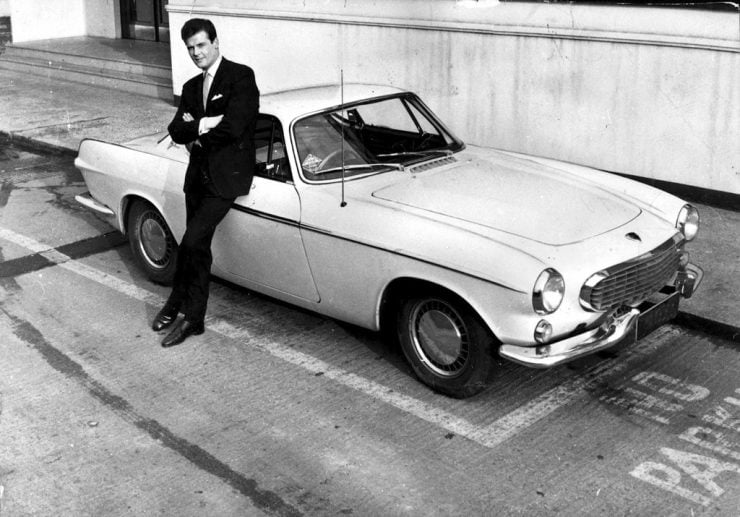
The television series did a great deal to promote the P1800 and toy car makers such as Corgi made models of it for fans of the series. The license plate of the film car was “ST1”, most apposite. Roger Moore’s portrayal of gentleman adventurer Simon Templar was a celebration of what a British gentleman should aspire to be.
The Volvo P1800 Enters Production in Britain
The P1800 was largely based on the Volvo Amazon 122S including being fitted with the same B18 B engine and M40/M41 transmission. The first three prototype cars were built by Frua between September 1957 and the beginning of 1958. Volvo’s manufacturing capability in Sweden was fully committed to the new Amazon and so they needed to look elsewhere for another maker to manufacture the P1800 cars for them. Their first approach was in December 1957 to German company Karmann, who made the Volkswagen Karmann Ghia.
When Volkswagen got wind of this they forbade Karmann from entering into a contract with Volvo. Volkswagen regarded Volvo’s new P1800 as a competitor to their car and threatened to end their existing relationships with Karmann if they built it. This left Volvo with the need to look elsewhere, so people did some thinking about alternatives. Hellmer Petterson was a freelance design consultant and he did some research and found that he could get sufficient financial backing to build and market the car independently should he so choose.
Meanwhile Volvo kept the existence of the car secret and considered their options. The car did not remain secret however and its existence was leaked to the press leading to Volvo deciding to pursue manufacture of the car. To this end the second of the three prototypes was exhibited at the 1960 Brussels Motor Show and garnered considerable positive interest.
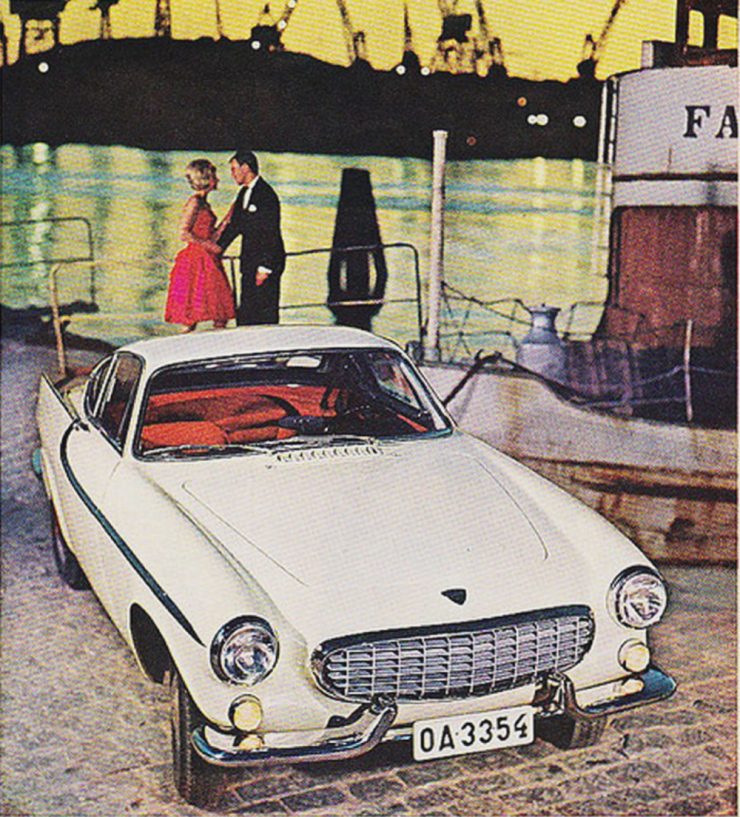
Volvo were unable to find another European maker who would be suitable to manufacture the P1800 although they approached a number, including NSU. It was time for Helmer Petterson to take a cross channel ferry and see what might be possible in Britain, the home of some of the greatest sports cars in the world. Volvo approached British sports car maker Jensen who were the makers of the body panels for the Austin-Healey sports cars.
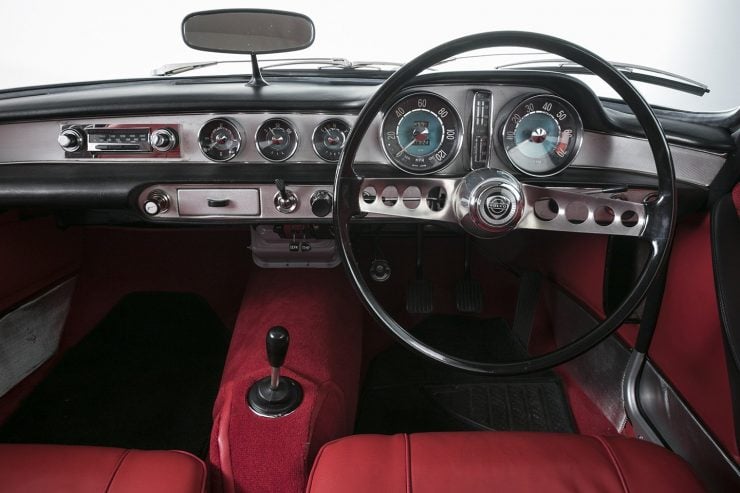
An arrangement was reached with Jensen that the bodywork for the P1800 would be made by Pressed Steel at their Linwood plant in Scotland which had opened in 1956, and then transported to Jensen, who would do the final paintwork and assembly of the cars.
Pressed Steel had a good name being the company that made body panels for the likes of Rolls-Royce, Bentley, Rover, Daimler, Jaguar and Alfa Romeo. Manufacturing began in 1960 with the first P1800 rolling off the production line at Jensen in September.
It did not take long however for Volvo to realize that the quality control provided by the British makers was sub-par. There were also problems with labor relations and logistics. Volvo became increasingly concerned and frustrated. The original contract had been for 10,000 cars but Volvo decided to bite the bullet and in April 1963 transferred manufacturing to their Lundby, Gothenburg facility in Sweden with only 6,000 cars made in Britain.
Популярная известность
Логотип Saint рядом с P958-X2 в музее Volvo
Volvo P1800 получил известность в начале 60-х, когда на белом Volvo P1800 1962 года выпуска с номерным знаком ST1 управлял персонаж. Саймон Тамплиер (Роджер Мур ) в популярном сериале Святой (1962–69).
Когда британская рок-группа ВОЗ посетил Штаб-квартира герцога Йоркского в Лондоне в 1966 году они позировали для прессы перед певицей Роджер Долтри новый Volvo P1800 66 года, окрашенный на заказ.
На выставке были представлены две новые машины. в 1961 г. Ягуар E-Type и Volvo P1800. Jaguar впервые предложили возможность предоставить E-Type для сериала, но отказался. Volvo приняла и предложила P1800, что привело к увеличению продаж. Изначально Volvo предоставила две машины для сериала: одну для статичных студийных снимков, а другую — для движущихся снимков. Когда появился P1800S, одна из более ранних моделей была подрезана, чтобы лучше снимать интерьер.[нужна цитата ] Когда сериал Возвращение святого был создан в 1970-х годах, Jaguar предлагал XJ-S для сериала.
The Best Design Comes From a Swede (With a Hint of Italian)
Gunnar Engellau believed that the proposed Volvo sports car should be based on the new Volvo Amazon 120 series platform, but the bodywork styled in Italy, preferably by Ghia who had done work for major US makers. Helmer Petterson’s son Pelle was at the time working for Frua, which was a subsidiary of Ghia and had been the designers of the AC 428.
Pelle Petterson created a design for the new Volvo and his design was submitted with a number of others although no-one other than he and his father knew that he was the designer: it was assumed it was the work of an Italian. In fact Pelle Petterson created his design under the tutelage of Pietro Frua so there was no doubt an Italian influence.
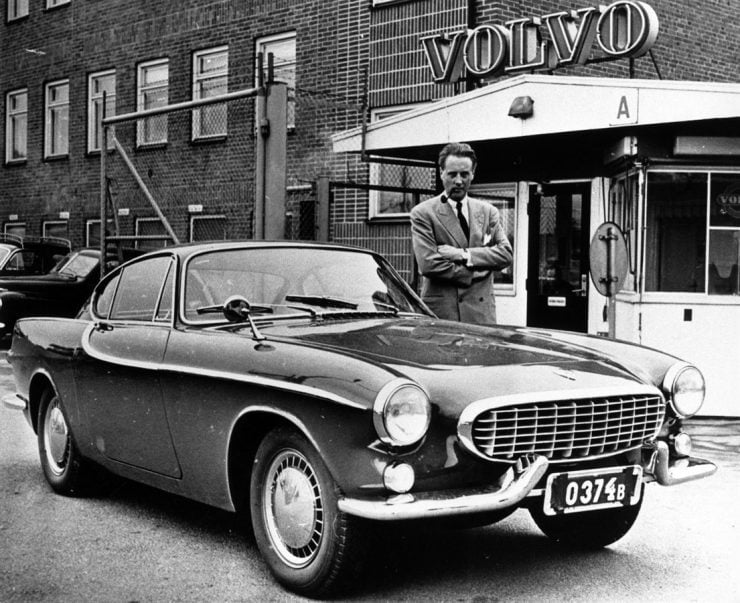
When it came time for the Volvo Board to review the designs from Italy they were presented with five options: four of these had come from Italian designers, and one anonymously from Pelle Petterson, a Swede. The board chose Pelle’s design and it was Gunnar Engellau who particularly liked the design. It was approved to go forward into production.
What transpired next turned out to be a little awkward. When it was revealed that Pelle Petterson was the car’s designer Gunnar Engellau became very annoyed, believing he had been deceived, and stated flatly that Pelle would never be acknowledged as the car’s designer. Pelle would go on to become a successful boat designer and Olympic medalist in boat racing, but his role as the designer of the Volvo P1800 would not be publicly acknowledged until 2009.
The Swedish Volvo 1800 S and 1800 E
The Swedish built cars were designated the Volvo 1800 S, with the “S” denoting that they were made in Sweden. The first production cars featured engines producing 108hp and in 1966 the power was upped again to 115hp. In 1969 the engine was changed from the B18 B to the 2 liter B20B producing 118hp.
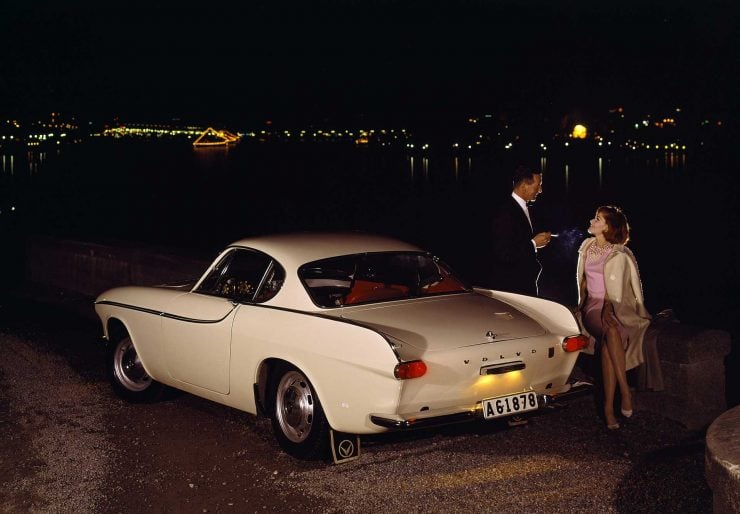
1970 saw the introduction of the Volvo 1800 E which was fitted with the B20E engine that was fitted with Bosch D-Jetronic fuel injection. The “E” standing for “Einspiritzung” (i.e. fuel injection). With its revised camshaft this engine provided 130hp and gave the 1800 E a standing to 100 km/hr (62.1mph) of 9.5 seconds and top speed of 190 km/hr (118 mph). The 1800 E was the first model to be fitted with disc brakes on all four wheels.
Рекомендации
- ^ World Cars 1972. L’Editrice dell’Automobile LEA / Herald Books. 1972. с. 254. ISBN 0-910714-04-5.
- Кардью, Бэзил (1966). Ежедневный экспресс-обзор автосалона 1966 года. Газеты Бивербрук.
- ^ Quattroruote Speciale: Tutte le Auto del Mondo 1967 (на итальянском). Editoriale Domus S.p.A., февраль 1967 г., с. 846.
- [постоянная мертвая ссылка ]
- ^
- Джеймс М. Фламманг (1994). Стандартный каталог импортных автомобилей, 1946–1990 гг.. Иола, Висконсин: Krause Publications, Inc., стр. 649. ISBN 0-87341-158-7.
- Осборн, Дональд (март 2013 г.). «Практичный хипстер Volvo». Рынок спортивных автомобилей. 25 (3): 28–29.
- Hersant, Jacques, ed. (Сентябрь 1973 г.). «Le Salon de l’Auto 1973: Toutes les Voitures du Monde» (на французском языке) (14 и 15). Авто журнал: 161.
- ^
The King of Reliability – Guinness Book of Records
How reliable are the P1800? Well, you can find the Volvo P1800 in the Guinness Book of Records for the ‘highest certified mileage driven by the original owner in non-commercial service.’ 77-year-old teacher Irv Gordon bought the Volvo P1800 in 1966 and has crossed the United States with it long and hard. He drove an incredible 3.2 million miles in 47 years, which is still a Guinness World Record today.
Source: YouTube
The car still has its original engine which didn’t require any special maintenance apart from the usual. “I challenge everyone to go around the world and see as much as possible. Find a reason to travel as you only have one life. No matter how many roads I drove, there was always one I hadn’t been on before. That’s why it’s all the more exciting” said Irv Gordon, who drove the 100-horsepower P1800 the same distance as 12 trips to the moon.
This Guinness record only adds to the Swedish brand’s status of being a manufacturer of high-quality reliable vehicles. The P1800 not only sported the looks but was built well and endured everything that owners demanded of it.
The Early days of the Volvo P1800
The beginnings of the Volvo P1800 seem almost as exciting as the adventures of Simon Templar in ‘The Saint‘.
The Swedes launched a two-door coupe project with a 2 + 2 seating design in 1957 as part of their European and American sales strategy. It was entrusted to Helmer and Pelle Petterson.
According to the original plans, the car was set to be manufactured in cooperation with Karmann, which fell into the water due to Volkswagen’s business ties with the German production and bodywork company.
Instead, the British company Jensen took on the responsibility of manufacturing the car. A company known as Pressed Steel made the bodies, with final assembly taking place at Jensen.
With constant problems with personnel, working methods, quality, suppliers and logistics, Volvo moved production and assembly to various plants in Sweden during 1963.

Enter the “Fish Van”, Otherwise Known as “Snow White’s Coffin”
As early as 1965 Volvo had been looking at a variety of body styling options for the P1800. Italian designer Fissore presented a fastback concept that made the P1800 look a bit like a Ford Mustang. Another Italian designer Coggiola came up with a couple of designs that got Volvo thinking however, the first was the “Beach Wagon”, and the other the “Jaktwagen” which translates as “hunter’s car” or “shooting brake”.
Going to the beach, and going shooting or fishing were common activities in the United States and Canada. So the notion of building a station wagon version of the P1800 gained some traction. It looked to be exactly the sort of model that would sell well in North America and similar markets. Frua also came up with a shooting brake version they called the Rocket, a design which scores a 10/10 on the scale of ugly creations and which was not chosen.
It was Volvo’s in-house designer Jan Wilsgaard, the man who had designed the Volvo Amazon, who came up with the much admired final design for a shooting brake version of the P1800 and it would be put into production on September 30th, 1971.
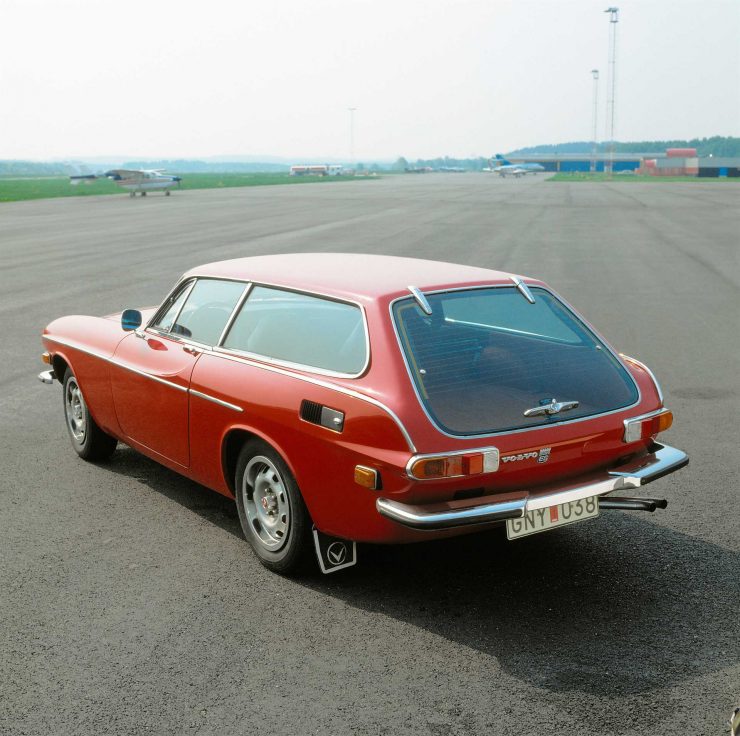
Jan Wilsgaard’s design featured large side windows and a tailgate which was of unframed glass, angled to ensure the car maintained a sleek look. With its side windows and glass tailgate it was nicknamed the “Fiskbilen” in Swedish (“Fiskbilen” meaning fish van) while the Germans were morbidly poetic and named it the “Schneewittchensarg”, which translates as “Snow White’s Coffin”.
Regardless of the nicknames many believe that the Jan Wilsgaard design actually improved the looks of the original 1800 and gave it a great deal of flexible functionality. This model was designated the 1800 ES and it featured a rear seat that could be folded down to provide a decent flat load area in the back.
In the interests of ensuring that the 1800 ES was a flexible and practical road car the engine power was reduced by reducing the compression ratio through the use of a thicker head gasket and re-tuning to give it 125 hp, and also making the engine’s power and torque more even. Among the reasons for doing this was the decision to offer the 1800 ES with an optional three speed Borg Warner automatic transmission, something that suited the style of the car and broadened its appeal.
As a “shooting brake” is likely to be used on dirt roads and tracks improving the flexibility of the engine was a sensible thing to do. The standard transmission was the M41 four speed all synchromesh gearbox with Laycock de Normanville electric overdrive on the top two gears.
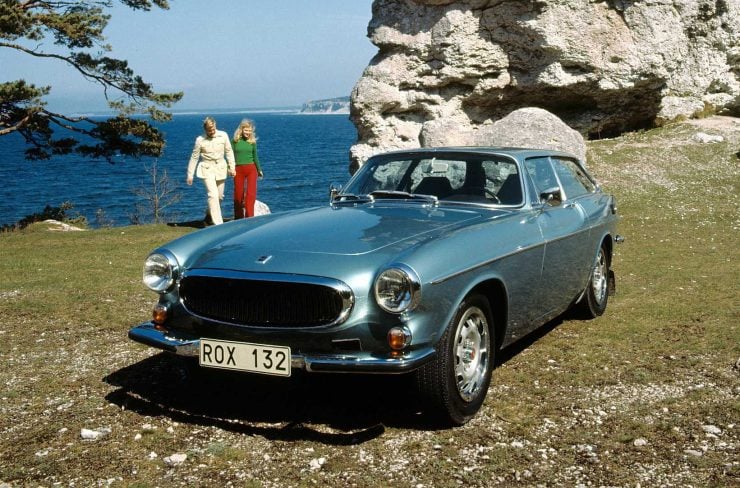
The 1800 ES entered production in 1972 and was the last model of the P1800 series. It was taken out of production in 1973 when new emissions standards came into force in the United States rendering it uneconomic for Volvo to adapt the car to meet them.
Примечания
- ↑ World Cars 1972 (неопр.). — L’Editrice dell’Automobile LEA/Herald Books, 1972. — С. 254. — ISBN 0-910714-04-5.
- Quattroruote Speciale: Tutte le Auto del Mondo 1967 (итал.). — Editoriale Domus S.p.A, 1967. — С. 846.
- Cardew, Basil. Daily Express Review of the 1966 Motor Show (англ.). — Beaverbrook Newspapers, 1966.
- Joslin, Tom . Jalopnik. Gawker.com (9 января 2011). Дата обращения: 24 ноября 2016.
- Benjamin Preston. . The New York Times (18 июня 2013).
- ↑ . Дата обращения: 19 сентября 2013.
- . Дата обращения: 22 февраля 2007.
- . Дата обращения: 22 февраля 2007.
- . msn.com. Дата обращения: 20 ноября 2018.
Внешние ссылки
|
Хронология автомобилей Volvo с 1927 по 1969 год → следующий период |
|||||||||||||||||||||||||||||||||||||||||||||||||||||||||||||||||||||||||||||||||||||||||||||||||||||||||||||||||||||||
|---|---|---|---|---|---|---|---|---|---|---|---|---|---|---|---|---|---|---|---|---|---|---|---|---|---|---|---|---|---|---|---|---|---|---|---|---|---|---|---|---|---|---|---|---|---|---|---|---|---|---|---|---|---|---|---|---|---|---|---|---|---|---|---|---|---|---|---|---|---|---|---|---|---|---|---|---|---|---|---|---|---|---|---|---|---|---|---|---|---|---|---|---|---|---|---|---|---|---|---|---|---|---|---|---|---|---|---|---|---|---|---|---|---|---|---|---|---|---|---|
|
|
Хронология моделей Volvo с 1970 года до наших дней. |
|||||||||||||||||||||||||||||||||||||||||||||||||||||||||||||||||||||||||||||||||||||||||||||||||||||||||||||||||||||||||||||||||||||||||||||||||||||||||||||||||||||||||||||||||||||||||||||||||||||||||||||||||||||||
|---|---|---|---|---|---|---|---|---|---|---|---|---|---|---|---|---|---|---|---|---|---|---|---|---|---|---|---|---|---|---|---|---|---|---|---|---|---|---|---|---|---|---|---|---|---|---|---|---|---|---|---|---|---|---|---|---|---|---|---|---|---|---|---|---|---|---|---|---|---|---|---|---|---|---|---|---|---|---|---|---|---|---|---|---|---|---|---|---|---|---|---|---|---|---|---|---|---|---|---|---|---|---|---|---|---|---|---|---|---|---|---|---|---|---|---|---|---|---|---|---|---|---|---|---|---|---|---|---|---|---|---|---|---|---|---|---|---|---|---|---|---|---|---|---|---|---|---|---|---|---|---|---|---|---|---|---|---|---|---|---|---|---|---|---|---|---|---|---|---|---|---|---|---|---|---|---|---|---|---|---|---|---|---|---|---|---|---|---|---|---|---|---|---|---|---|---|---|---|---|---|---|---|---|---|---|---|---|---|---|---|---|---|---|---|---|
|
Prices on the Rise
The prices of the Volvo P1800 have been steadily rising since 2010. Even though a massive jump in value is not expected, the P1800 remains a sensible investment for vintage car lovers.
The prices of beautifully maintained P1800 today range between 10 – 40,000 Euros. The highest price paid for a P1800 so far was achieved by a 1973 Volvo P1800ES Sport Wagon with only 13 thousand miles (21,000 kilometers). It was sold at a US auction by Bonhams Auctioneers to a buyer who paid $92,400 USD in 2014.

1973 Volvo P1800ES Sport Wagon / Source Bonhams
A few years ago, Volvo toyed with the idea of creating a modern version of the P1800, dubbed the Volvo concept coupe. “This is not a futuristic dream car, but proof of what we are capable of today,” said designer Thomas Ingenlath at the time. The concept, which was powered by a 400-horsepower engine, has not (yet) seen the light of production -watch this space.
Red Racing P1800 – Racing History

62 Volvo P1800
Even though the P1800 was never designed to be a track car, it still has a rich racing history that is not usually talked about. The P1800 was present in the official racing scene from 1962 to 1972. It started in a total of 164 officially sanctioned races and achieved a finishing ratio of 84%. Of the races, it went on to win 15 times with 17 runner-up places.
Many of these races were endurance races which were perfect for the reliable Volvo. The P1800 appeared on many renowned race tracks including the infamous Nürburgring and Daytona.
Perhaps the most notable driver of the Volvo P1800 race car is Art Riley. Arthur Francis Riley was an endurance-race driver, and owner of Art Riley Motors in Port Washington, N.Y.
As a garage owner and master mechanic Riley was granted one of America’s early Volvo franchises in 1957.

Art Riley next to his Volvo P1800
“As soon as I drove one,” he said, “I knew it was faster than a Porsche or MG. They had made a sports car out of a sedan.” Riley was amongst the most successful race car drivers of the 1960s. He drove in the SCCA Regional, Divisional and National events, and he also attended FIA international races.
Riley and his red Volvo P1800 coupe came incredibly close to winning the SCCA’s 1963 F-Production National Championship. Before that, Riley and his P1800 won the New York Regional championship in that same year. All together, Riley and the P1800 appeared in 64 official races.
1965 Sebring 12-Hour Grand Prix of Endurance
One of the most memorable races for the red Volvo P1800 coupe was at the 1965 Sebring 12-hour Grand Prix of Endurance. Driving the number 51 on its flank (But VIN #14 on the firewall), this was to be its final Grand Prix of Endurance.
At the start of the race, Ed Leslie in the Cobra Daytona Coupe stalled in traffic. Being boxed in and with nowhere to go, Art Riley in the #51 Volvo P1800 struck the Daytona in the rear quarter leaving the cars front end damaged. With some nifty panel bashing, the red Volvo continued the race.

Front end damage on the Volvo from the shunt with Ed Leslie’s Daytona Coupe. (photo: Dave Nicholas)
This was not to be the only drama #51 would have. Shortly after 3pm the Volvo’s engine blew on the big bend approaching the Hairpin turn, leaving oil on an already soaked race track. Nick Cove, who was driving at the time, pulled over onto the grass and got under the car to inspect the damage.
While inspecting the underside of the car, George Reed in the #20 Shelby Cobra roadster came in contact with the oil slick and plowed directly into the P1800, narrowly missing Nick Cone and his outstretched legs. By some miracle nobody received major injuries, but not could be said of the Volvo P1800 as can be seen by the photo below.

Art Riley and Nick Cone’s Volvo P1800 did not make the finish after a huge accident with the #20 Cobra. Three cars were totaled in that incident and with only very minor injuries. This is what is left of the #51 Volvo P1800 after he blew his engine and when he stopped to check the car was hit by the #20 Shelby Cobra.
The P1800 remains a popular sight in historic endurance races and other forms of vintage racing events. One P1800, in particular, called the “Mobil 1” has a rich history in the more recent vintage car racing history. Mobil 1 was built in the midst of the 1990s.

Mobil 1 Volvo P1800 / Source: Inside Track Motorsport News
It was fitted with the updated B20 engine and several other modifications that increased its power. This red P1800 won 5 consecutive Volvo Historic national championships and remains active to this day.
The Volvo P1800: Cheaper than a Ferrari (and Much More Practical)
When it was introduced the P1800 fitted market interest perfectly. Many people wanted a sports car but also wanted it not as an open top roadster that would prove to be uncomfortable and not waterproof in bad weather, but instead wanted a practical closed sporty coupé or hatchback.
The MGB GT was created to fill exactly that consumer demand and so Volvo were right on target with the P1800, and were arguably even more on target with the 1800 ES shooting brake version. Add to this that most people can’t afford to buy an exotic Ferrari or Maserati, nor could they afford the astronomical maintenance costs of such a thing. But Volvo offered a sporty practical car that would just about go forever, with great comfort but yet with a real sports car feel and look. The P1800 put a lot of attractive features into a very affordable package.
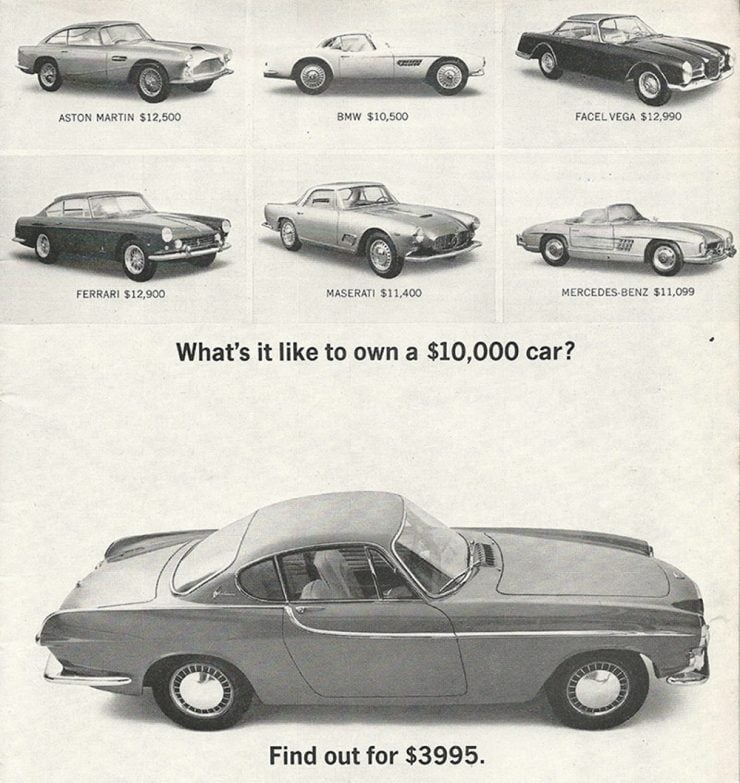
История
После провала прототипа первой спортивной модели фирмы Volvo P1900 в 1957 году фирма поручила дизайн нового варианта Хельмеру Петтерсену, автору Volvo PV444. Первый новый автомобиль ручной сборки был готов уже к декабрю, но разногласия с западногерманской Фольксваген, где предполагалось производство (на заводах Karmann) чуть не привели к полной остановке проекта. В результате этих конкурентных трений производство P1800 началось лишь в сентябре 1960 на мощностях английской фирмы Jensen. Серия оказалась успехом Volvo и производилась в течение 13 лет до 1973 года.
Прототип P958-X1, 1957
Серия выпускалась в 4-х основных модификациях:
- P1800 — 1960—1963
- 1800S — 1963—1970
- 1800E — 1970—1972
- 1800ES — 1972—1973
Under the Hood of the P1800
From a technical point of view, the shortened platform and mechanics of the Volvo P1800 were based on the reliable Volvo Amazon.
The P1800 features a rear-wheel drive, front-mounted engine and rear rigid axle. There are also four disc brakes (later models) and a manual four-speed M40 or the M41 transmission. The first 4-cylinder engine called the B18 also came from the Volvo Amazon, but thanks to two built-in carburetors, it provided a bit more power, 100 hp to be exact. Later, with technical renovations, they also introduced new engines, which squeezed out up to 130 hp.
| Specification | Volvo P1800 |
| Engine Location | Front, in-line |
| Configuration | Four-cylinder |
| Capacity | 1780cc |
| Valve Operation | Pushrod |
| Horsepower | 100bhp @ 5500rpm |
| Transmission | Manual Four-speed |
| Drive | Rear |
| Suspension – Front | Wishbones and coil spring |
| Suspension – Rear | Radius rods and coil spring |
| Brakes | Front disc, rear drum |
| Top speed | 105mph |
| Acceleration | 0-60mph 12.5 seconds |
Volvo P1800 Specifications
Conclusion
Production of the P1800 series was brought to an end in 1973. The burgeoning emissions regulations and vehicle standards rules took their toll and Volvo also believed that the P1800 was beginning to look a tad dated. Perhaps back then the idea of “retro” had not been fully realized yet, but the “Three Million Mile Car” was retired and replaced.
For those of us who appreciate “retro” the P1800 remains one of the great classic cars that can be used as a daily driver. If you have a hankering to repeat Irv Gordon’s three million miles then a P1800 would be a perfect choice of vehicle to do it in.
Photo Credits: Volvo, RM Sotheby’s, Hexagon Classics
Introduction: The Volvo “Chevvy Corvette” That Wasn’t
The story of the creation of the Volvo P1800 begins back in 1953 when Volvo co-founder and Vice-President Assar Gabrielsson visited the USA and while there he had the opportunity to visit GM and see the new (C1) Chevrolet Corvette production line at Flint, Michigan.
While in the US Gabrielson also observed that European sports cars such as those from Britain, Italy and Germany were becoming popular, especially with celebrities. Assar Gabrielsson could see that if the Germans and the British could make exotic sports cars that American movie stars would buy and be seen driving around in then surely Volvo could do that also. Such a car, and such publicity would certainly be good as a way to pave Volvo’s entry into the lucrative American market.
Inspired by the possibilities Assar Gabrielsson entered into discussion with a company named Glasspar, who made fiberglass moldings for boats and automobiles, and commissioned them to design a sports car based on the mechanicals of Volvo’s rather unexciting PV444 sedan. Glasspar designer Bill Tritt got to work and had a set of design drawings ready for Gabrielsson before he left the United States and returned to Sweden.
Glasspar already had a good track record in car production being the makers of the fiberglass bodies for the Kaiser-Darrin sports car. Three prototypes were built and Volvo debuted their new Volvo Sports P1900 at the Brussels Motor Show of 1955, putting the car into production in 1956. The P1900 was built using similar production methods as the American Chevrolet Corvette and it was based on the much loved and very reliable Volvo PV444, what could possibly go wrong?
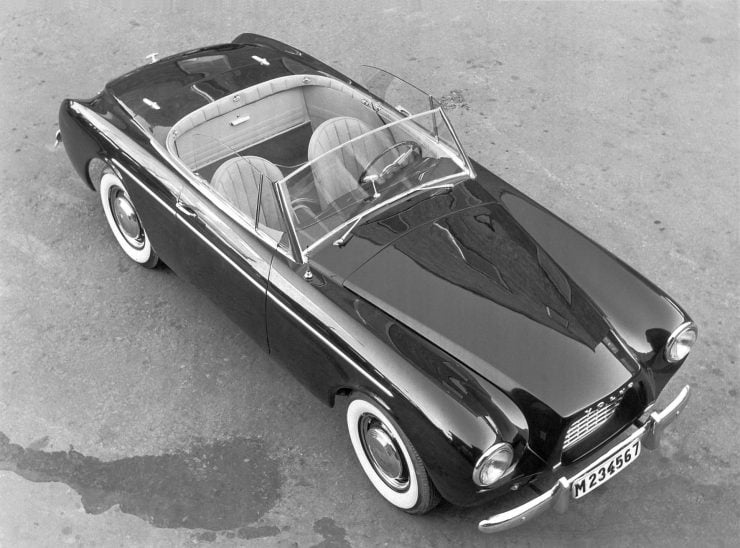
This was at a time when the glass reinforced plastics industry was engaged in hard selling the advantages of their method of building car bodies and both Chevrolet and Volvo would put sports cars into production using this construction method. For Chevrolet it was the C1 Corvette, and for Volvo it was the P1900.
In both the Corvette and Volvo P1900 the same problems of shoddy build quality led to both companies seriously considering ending production. In Chevrolet’s case the C1 Corvette was saved by the introduction of the Ford Thunderbird for which Chevrolet had to have a competitor, and by Zora Arkus-Duntov the “Father of the Corvette”. The car was thoroughly debugged so the doors would not unexpectedly fly open when cornering.
In the case of the Volvo Sports P1900 the end came when Assar Gabrielsson was succeeded as Vice-President by Gunnar Engellau, who had been the engineer in charge of Volvo’s aircraft engine subsidiary. He ordered the ending of P1900 production in 1957 after engineers Helmer Petterson and Pelle Nystrom took one on a 16,000 kilometer test drive through southern Europe and North Africa and came back with a negative report. Engellau remained convinced that a sports car was needed for Volvo to be successful in the US however and he commissioned work for a suitable new sports car.
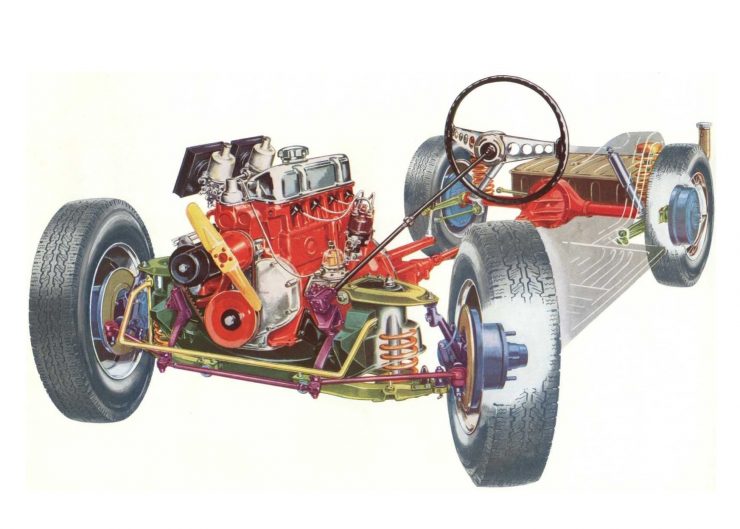
Above Image: Volvo P1800 and Amazon platform.

